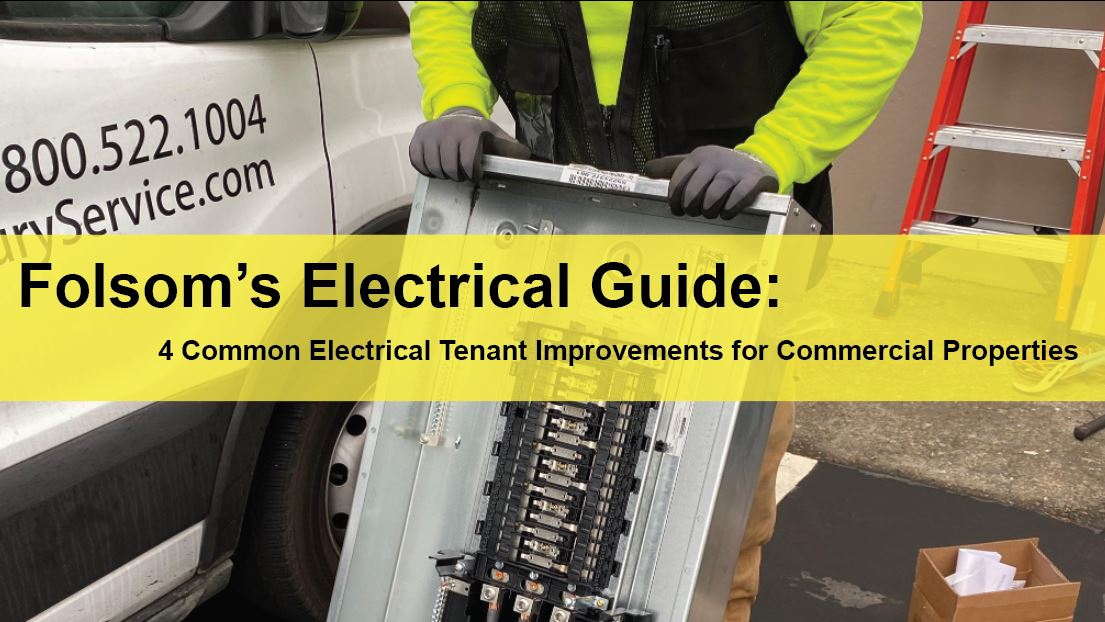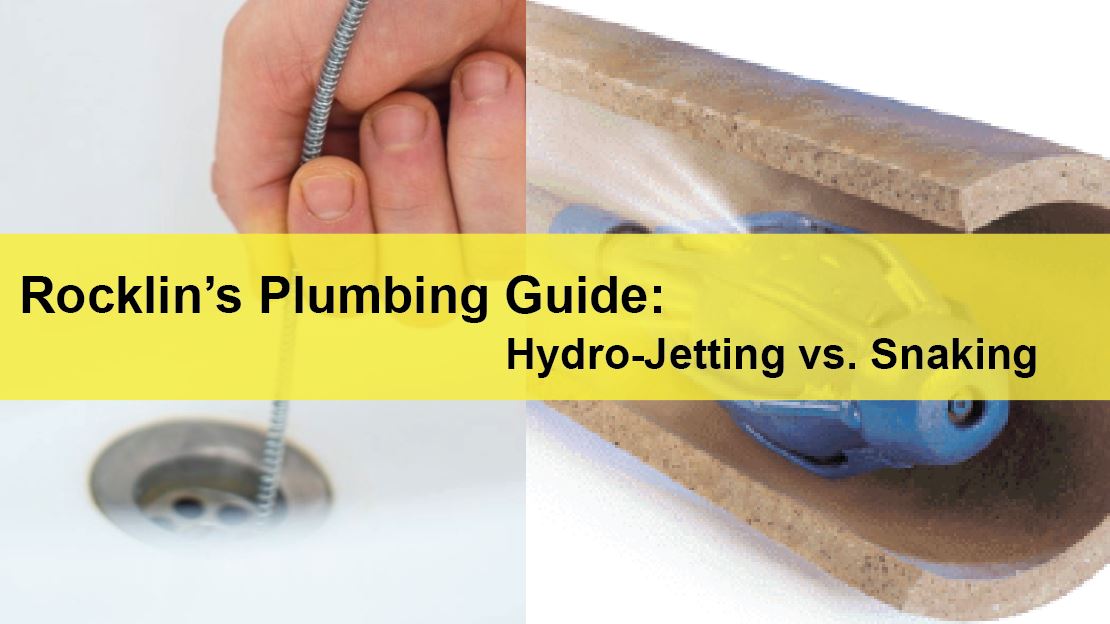Commercial LED Lighting
The Hidden Costs of Maintaining Commercial LED Lighting
A Heads Up for Property Owners and Managers
LIGHTING | ELECTRICAL | PLUMBING | MECHANICAL
Northern California | Sacramento | Auburn | San Francisco | Bay Area | Reno
In the world of Commercial Property Management, LED Lighting has been hailed as a game-changer, promising reduced energy consumption, years of minimal maintenance, and significant cost savings. For the past seven years, the State of California has even mandated LED as the go-to lighting option for newly constructed properties, underlining its importance in modern building design. With its energy efficiency, long lifespan, and impressive illumination capabilities, LEDs seemed like the ultimate solution to cutting maintenance costs and boosting sustainability.
However, as the initial wave of LED installations approaches the end of its lifespan (5-10 Years), a sobering reality is dawning for Commercial Property Owners and Managers: the maintenance needs of Commercial LED lighting may be costlier than anticipated, potentially even surpassing those of traditional lighting technologies like HID, Halogen, or Fluorescent fixtures.
For years, Commercial Properties have received the benefits of minimal maintenance requirements with LED lighting. Unlike traditional lighting sources such as HID, Halogen, or Fluorescent Bulbs, LEDs typically offer a lifespan of 50,000 to 100,000 hours, translating to years of reliable operation with little to no need for servicing, under controlled circumstances. This longevity has been a major selling point, promising reduced short-term maintenance expenses and enhanced operational efficiency. However, as LED fixtures age, they will inevitably face challenges. Factors like lumen depreciation, color shifting, driver failures, LED chip failures, Motherboard Failures, circuit failures and vandalism can degrade illumination quality over time, necessitating more frequent replacements compared to traditional lighting systems in the future.
The maintenance landscape for LED fixtures is vastly different from traditional lighting systems. The one-size-fits-all approach to maintenance that worked for traditional lighting simply doesn’t apply to LEDs. Repairs are often more complex and costly due to the unique design and construction of individual LED fixtures, with specialized components that can be challenging to source. A difficulty with LED maintenance is figuring out what’s wrong when a fixture starts acng up. Unlike traditional lighting systems, where troubleshooting and outages was more straightforward, LEDs can be a bit trickier to diagnose. With all their electronic tech and specialized parts, it’s not always easy to pinpoint the problem, so the initial visit to make a repair is usually a Diagnostic Service to confirm what the next steps may be. Then comes the tough call; repair or replace? In addition, Property Managers or Owners might not expect the cost of diagnosing or troubleshooting, as it can vary depending on a multitude of factors, such as the complexity of the problem and what is the best solution.
One significant factor driving the higher maintenance costs of Commercial LED lighting is the evolving nature of LED technology itself. As LED technology has advanced over the years, newer generations of fixtures offer improved efficiency, brightness, and functionality. Think of LED fixtures like a cell phone. Just as most people opt to replace a damaged or broken cell phone rather than repairing it due to the cost and complexity involved, the LED lighting industry operates under a similar paradigm. LED manufacturers follow a model to that of the smartphone market, where the focus is on replacing the entire fixture rather than manufacturing universal-fit individual components for simple repairs. This approach is driven by factors such as cost-effectiveness, efficiency, and the evolving nature of LED technology. This presents property owners with a dilemma: whether to invest in costly repairs (if materials are available to be sourced) of outdated fixtures or upgrade to newer, more efficient models. Adding to the challenge, many LED manufacturers have discontinued older models housings in favor of newer iterations, making it difficult to find aesthetically matching fixtures for maintenance or matching replacement purposes.
Compounding these challenges is the unfortunate reality that many LED manufacturers of yesteryears have either gone out of business or been absorbed by larger companies. This presents a significant hurdle for service and repairs, as warranties and support for existing LED fixtures may no longer be honored or available. Without the backing of the original manufacturer or installer, Property Owners and Managers are left to fend for themselves when it comes to maintenance and repairs, further increasing the burden on their budgets.
In addition to the challenges posed by maintenance and Manufacturer support, another factor exacerbating the maintenance needs of Commercial LED lighting is their heightened sensitivity to electrical and environmental factors. Unlike traditional lighting technologies, which were often more robust and durable, LED fixtures are inherently more susceptible to the effects of electrical issues, heat, weather, and other external factors. Exposure to extreme temperatures, moisture, and humidity can accelerate the degradation of LED components, leading to premature failures and costly repairs. Outdoor LED fixtures, such as those used for parking lot lighting or building facades, face additional challenges due to exposure to the elements. Harsh weather conditions, including high temperature heat, rain, snow, and UV radiation, can take a toll on the structural integrity and performance of LED fixtures, necessitating more frequent maintenance and replacements. This heightened sensitivity to environmental factors further underscores the importance of proactive maintenance and strategic planning for property owners and managers seeking to navigate the complexities of LED lighting management.
As we delve into the economics of LED maintenance, it’s becoming increasingly vital for Property Owners and Managers to take a proactive approach. This means teaming up with experienced Lighting & Electrical Maintenance Contractors who have the know-how and resources to handle the ins and outs of LED upkeep. Regular site inspections are key here. They’re like regular check-ups for your property’s lighting system, helping to spot potential issues before they snowball into costly headaches. And let’s not forget about strategic planning for fixture replacements. It’s all about staying one step ahead of the game, avoiding those sudden budget surprises.
Many Property Owners and Managers have become accustomed to the low maintenance needs of LEDs since their installation. However, as these fixtures age, that’s all going to change. The days of set-it-and-forget-it lighting are coming to an end, and it’s crucial to be prepared. By being proactive about maintenance and looking towards the long term, property stakeholders can keep the financial impact of LED upkeep in check throughout their property’s journey.
Expanded Cliff Note Summary of LED Maintenance Knowledge
- Introduction to LED Lighting in Commercial Property Management
o LED lighting has revolutionized the industry by promising reduced energy consumption and significant cost savings.
o For the past seven years, the State of California has mandated LED lighting for newly constructed properties, underscoring its importance in modern building design.
o LEDs offer exceptional energy efficiency, long lifespans, and impressive illumination capabilities, making them an attractive option for cutting maintenance costs and boosting sustainability.
- Reality Check on LED Maintenance Costs
o As the initial wave of LED installations approaches the end of their lifespan (5-10 years), property owners and managers are discovering that maintenance costs may be higher than anticipated.
o These costs could potentially surpass those associated with traditional lighting technologies like HID, Halogen, or Fluorescent fixtures, challenging the perception of LEDs as low-maintenance solutions.
- Longevity and Initial Benefits of LEDs
o LEDs typically offer a lifespan of 50,000 to 100,000 hours, which translates to years of reliable operation with minimal servicing under controlled circumstances.
o This longevity has been a major selling point, promising reduced short-term maintenance expenses and enhanced operational efficiency.
- Challenges of Aging LED Fixtures
o As LED fixtures age, they encounter issues such as lumen depreciation, color shifting, driver failures, LED chip failures, motherboard failures, circuit failures, and vandalism.
o These challenges degrade illumination quality over time and necessitate more fixture replacements compared to traditional lighting systems in the future.
- Complexity of LED Maintenance
o The maintenance landscape for LED fixtures is vastly different from that of traditional lighting systems and will cost more in labor and materials versus traditional lighting system.
o The one-size-fits-all approach to maintenance that worked for traditional lighting does not apply to LEDs, as repairs are often more complex and costly due to their unique design and specialized components.
o Diagnosing problems in LED fixtures is more challenging due to their electronic tech and specialized parts, making the initial repair visits typically an LED Diagnostic Service to determine what the issue is and what next steps are needed for repair.
- Evolving LED Technology and Its Impact
o LED technology has advanced over the years, with newer generations of fixtures offering improved efficiency, brightness, and functionality.
o Similar to the smartphone market, the focus in the LED industry is set up for replacing entire fixtures rather than repairing them, due to the cost and complexity involved.
o This approach presents a dilemma for property owners: invest in costly repairs of outdated fixtures or upgrade to newer, more efficient models.
o Many LED manufacturers have discontinued older models, making it difficult to find aesthetically matching fixtures for maintenance or replacement purposes.
o This results in more fixture replacements as an economical solution rather than fixture repairs.
- Manufacturer Challenges
o Many original LED manufacturers have either gone out of business or been absorbed by larger companies, complicating service and repairs.
o Without the backing of the original manufacturer or installer, warranties and support for existing LED fixtures may no longer be honored or available, increasing the maintenance burden on property owners and managers.
o Often times the labor involved in order to qualify for a warranty outweighs the cost of simply replacing the fixture.
- Sensitivity to Electrical and Environmental Factors
o LEDs are more sensitive to electrical issues and environmental factors than traditional lighting technologies.
o Exposure to extreme temperatures, moisture, and humidity can accelerate the degradation of LED components, leading to premature failures and costly repairs.
o Outdoor LED fixtures, such as those used for parking lot lighting or building facades, face additional challenges from harsh weather conditions, necessitating more frequent maintenance and replacements.
- Proactive Maintenance Approach
o It’s vital for property owners and managers to take a proactive approach to LED maintenance by partnering with experienced lighting and electrical maintenance contractors.
o Regular site inspections are crucial for spotting potential issues before they escalate into costly problems.
o Strategic planning for fixture replacements is essential to avoid unexpected budget surprises and ensure long-term sustainability.
- Conclusion: Preparing for Increased Maintenance Needs
o Many property owners and managers have become accustomed to the low maintenance needs of LEDs since their installation, but this is changing as fixtures age.
o The days of set-it-and-forget-it lighting are coming to an end, and it’s crucial to be prepared for increased maintenance needs.
o By being proactive about maintenance and looking towards the long term, property stakeholders can keep the financial impact of LED upkeep in check and ensure the longevity and efficiency of their lighting systems
Service Regions Available: Sacramento, Roseville, Rocklin, Folsom, Elk Grove, Yuba City, Chico, Vacaville, Fairfield, Stockton, Modesto, Turlock, Pleasanton, Concord, San Jose, San Mateo, Walnut Creek, Oakland, Pinole, San Leandro, San Ramon, Hayward, Truckee, Northern Nevada, Reno, Sparks, Carson City, Central Valley



